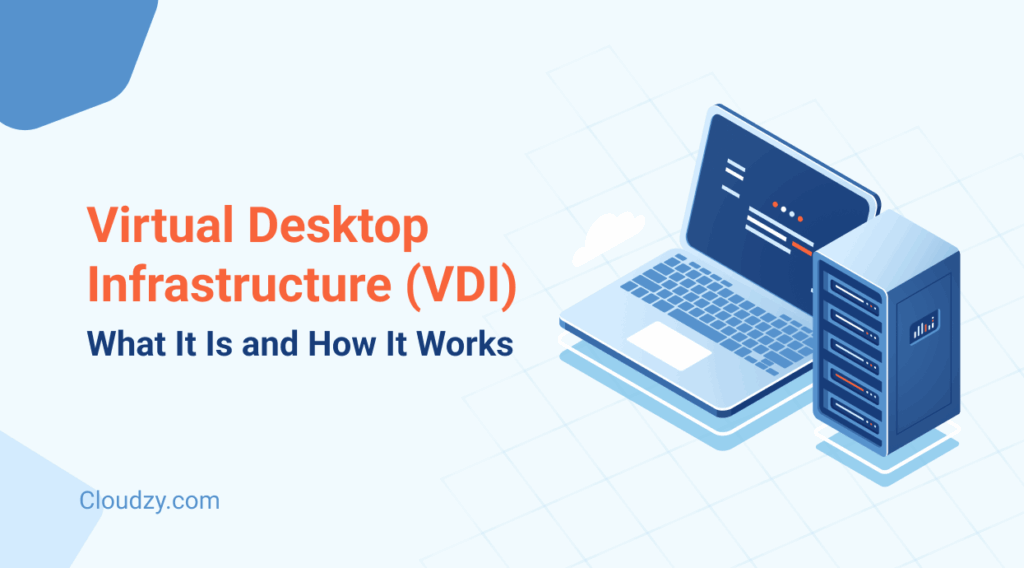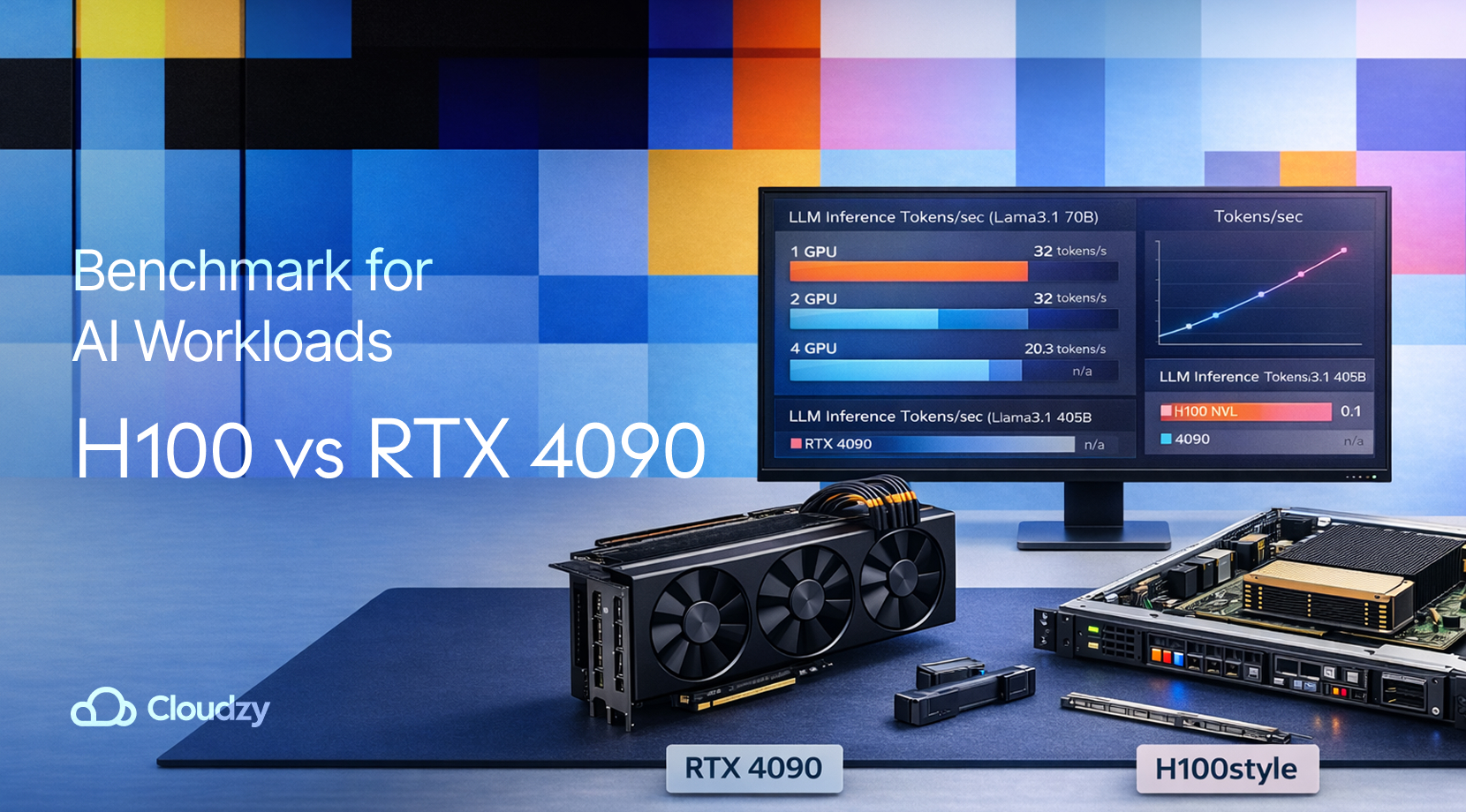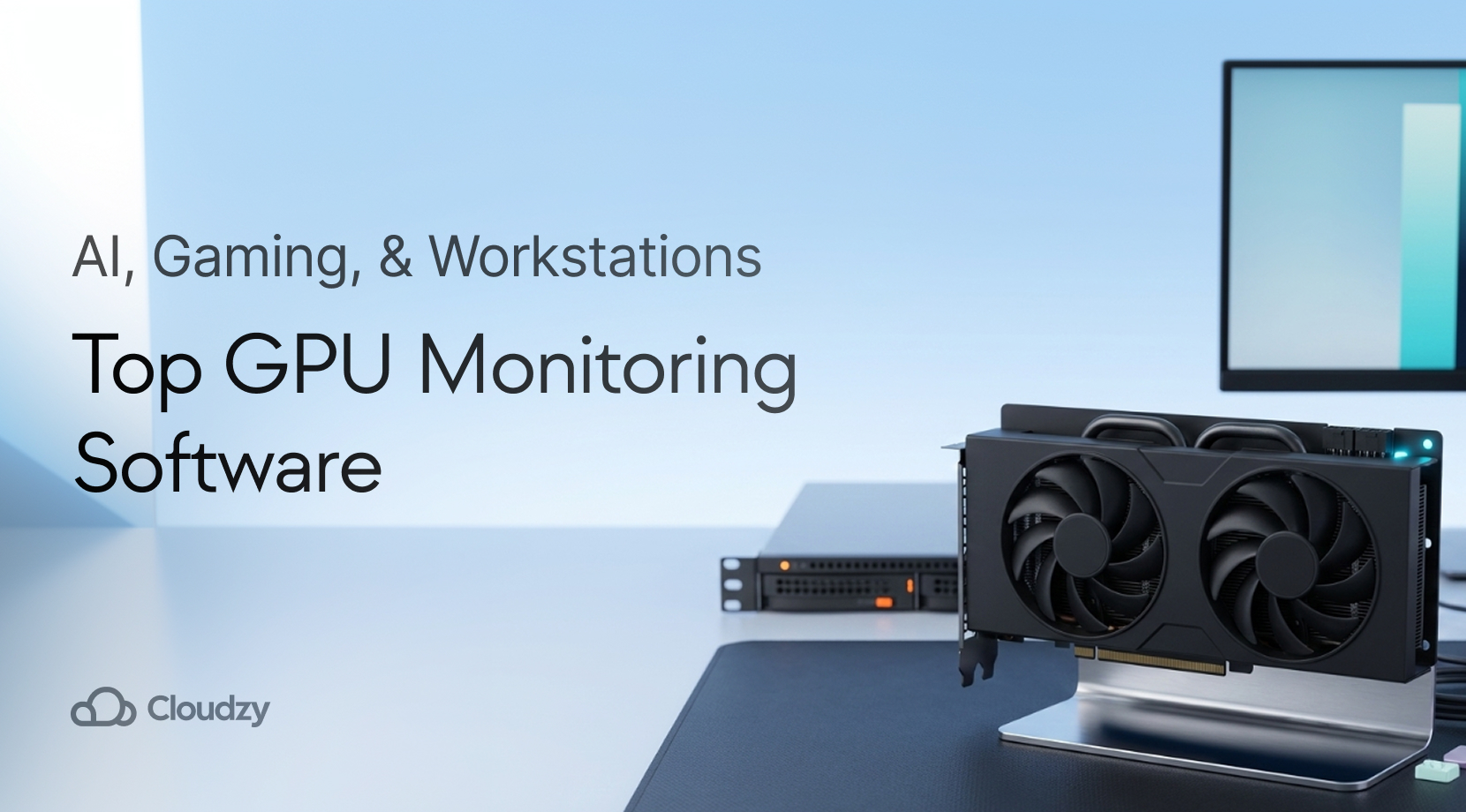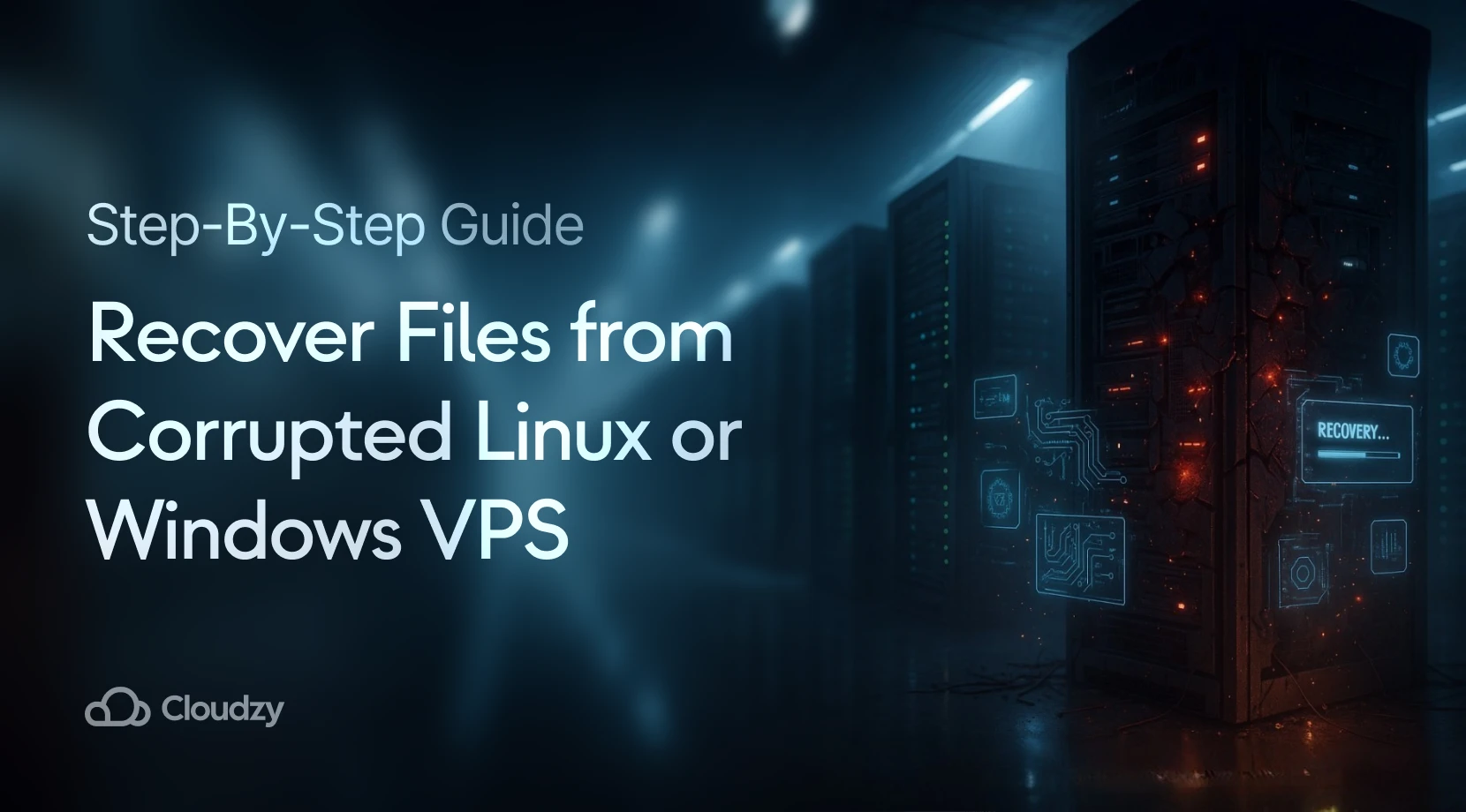Virtual Desktop Infrastructure (VDI) might sound like a mouthful, but if we define virtual desktop infrastructure in simple terms, it’s about taking the traditional desktop PC environment and moving it to a virtualized desktop infrastructure on a centralized server. In other words, instead of running your Windows or Linux desktop on your personal laptop or office PC, you’re accessing that desktop over a network from a powerful server located elsewhere.
This means all the heavy lifting is done in the data center, and what is virtual desktop infrastructure if not a way to give you the same desktop experience on any device? It doesn’t matter if you’re using a lightweight laptop, a tablet, or even a thin client; VDI lets you log into a full desktop as if you were right in front of a high-end workstation.
What Is Virtual Desktop Infrastructure (VDI)?
In a nutshell, if someone asks what is virtual desktop infrastructure, you can answer that it’s a technology framework that enables the creation of virtual desktops on central servers and makes them available to users on demand. Imagine an office where employees don’t have individual PCs under their desks. Instead, a cluster of servers in a data center hosts all the desktops as virtual machines. Each employee uses a simple endpoint (like a thin client or an old laptop) to connect to their remote desktop. This setup is virtual desktop infrastructure in action. VDI allows those centralized virtual desktops to be delivered to users on demand.
One way to think of it is as a twist on the classic remote desktop concept. Traditional remote desktop tools (like Microsoft’s RDP) let you connect to one specific PC from afar. VDI takes that idea further by running many desktop instances on big servers and distributing them to many users simultaneously. Because everything is centralized, IT can manage all those desktops in one go, improving control and security. This centralization is one of the key virtual desktop infrastructure benefits that appeals to IT departments.
What is virtual desktop infrastructure useful for? It’s great for organizations that want to simplify desktop management, support remote work, or allow bring-your-own-device policies. Since all data lives on the server, VDI can also boost security; nothing gets stored on the endpoint device.
No wonder that In 2024, the global market for virtual desktop infrastructure (VDI) stood at an estimated $15.61 billion, with forecasts suggesting it could grow to $78.03 billion by 2032, with a compound annual growth rate (CAGR) of 22.1% over the forecast period.
What Is an Example of a VDI?
For example, consider a design firm where the designers use powerful software like AutoCAD or Adobe Creative Suite. Instead of buying a high-end PC for each designer, the firm sets up a VDI environment using a solution like VMware Horizon or Citrix Virtual Apps and Desktops. Each designer connects to a remote virtual desktop that has all the necessary software and horsepower (graphics acceleration, memory, etc.) provided by the central servers.
The designers can access these same virtual desktop infrastructure solutions from a weak home laptop or even a tablet, and still get the performance of a workstation. This scenario is a real-world example of VDI: the end-user experience is a standard desktop, but it’s delivered over the network from a centralized, virtualized data center.
How Does VDI Work?
Now that we’ve covered what is virtual desktop infrastructure, let’s look at how it works behind the scenes. A VDI environment relies on several key virtual desktop infrastructure software components working together:
- Hypervisor (Virtualization Platform): This is the software that creates and runs the virtual machines. It slices a physical server into multiple virtual desktops. Popular hypervisors include VMware ESXi and Microsoft Hyper-V.
- Connection Broker: Think of this as the traffic cop. It manages user connections, making sure that when you log in, you’re routed to the correct virtual desktop. The broker authenticates users and assigns them a desktop instance (either a fresh one or their personal one).
- Desktop Images: These are the master copies of the operating system environment. For non-persistent (pooled) VDI, all users get an identical desktop from a golden image. For persistent VDI, each user’s desktop image is unique and saved between sessions.
- Client Device & Protocol: The user connects to VDI through a client application on their device. When you move your mouse or type, those inputs go over the network to the server. The server then sends back the screen updates. Protocols like RDP, PCoIP, or HDX (Citrix) handle this transfer efficiently to make it feel smooth.
When a user launches their VDI session, the process typically goes like this: the connection broker checks the user’s credentials, finds an available virtual desktop (creating one from the desktop pool if needed), and connects the user’s client to that virtual machine. From the user’s perspective, it feels like logging into a normal PC, except everything is running on a remote server. Under the hood, the hypervisor is keeping those multiple desktop VMs isolated and running, and possibly leveraging hardware like GPUs if high performance is needed.
It’s worth noting that VDI can be persistent or non-persistent. We’ll cover these types next, but the key takeaway is that VDI’s flexibility allows it to work in different modes depending on the need.
What Are the Types of VDI?
When implementing a virtual desktop infrastructure, there are two main types of deployments to consider: persistent VDI and non-persistent VDI.
- Persistent VDI (Personal Desktops): In a persistent setup, each user connects to the same desktop VM every time. That means they can customize it to their heart’s content (save files, change settings, install apps), and those changes stick. It’s called “persistent” because the desktop state persists between sessions.
- Non-Persistent VDI (Pooled Desktops): In a non-persistent model, the user gets a fresh, standardized desktop each time they log in. When they log off, any changes they made are wiped clean. Next time, the system just spins up a new desktop from a master image.
Both types can coexist in a deployment, and some organizations choose a mix: for example, give power users persistent desktops, and provide non-persistent ones for temporary staff or kiosk stations. The choice between them depends on balancing user flexibility against ease of management and resource use.
What Are Cloud-Native Virtualized Desktops?
So far, we’ve explained “What is virtual desktop infrastructure” in the context of a company’s own data center. But virtual desktop infrastructure in cloud computing is increasingly popular. In fact, many modern VDI solutions are cloud-native, meaning the virtual desktops run on cloud providers’ infrastructure rather than on local servers. This model is often referred to as Desktop as a Service (DaaS).
In a cloud-native VDI scenario, you don’t need to buy and maintain physical servers yourself. Instead, a provider like Amazon, Microsoft, or Citrix hosts the virtual desktops for you in their cloud. For example, Amazon WorkSpaces and Microsoft Azure Virtual Desktop are cloud-based VDI offerings. You, as an admin, can define desktop images and user entitlements, but the cloud provider takes care of the heavy lifting (like running the VMs, scaling them, and keeping the hardware humming).
In essence, whether you run VDI on-premises or use DaaS (virtual desktop infrastructure in cloud computing), the concept of virtualized desktop infrastructure is still the same; only the location of the servers and management responsibilities differ.
What Is VDI Used For?
By now, you might be wondering where VDI shines the most. The answer is that VDI is used in a wide range of scenarios that call for flexibility and centralized control. Here are some of the most common use cases for virtual desktop infrastructure:
- Remote Work and BYOD: Companies with remote employees or bring-your-own-device policies use VDI to give people secure access to a corporate desktop from anywhere. If an employee is traveling or working from home, they can fire up a VDI session and get the same environment they’d have at the office. This became especially relevant during recent years when remote work skyrocketed.
- Security-Sensitive Environments: Because data in a VDI setup resides on the server, organizations like banks, healthcare providers, or government agencies often use it to prevent sensitive information from living on laptops that could be lost or stolen. Virtual desktops allow IT to keep tight control over data and application access.
- Simplified IT Management: VDI is also used to make management easier for IT departments. Deploying software updates or new applications becomes efficient when you can do it once on a master image instead of touching hundreds of PCs. For example, a university lab might use VDI so that resetting all the lab machines for a new class only takes updating the central image.
- Contractors and Temporary Staff: When you have short-term workers or third-party contractors, VDI can quickly provision a standardized work environment for them. They can be given access for the duration of their contract without issuing company laptops. Once they’re done, just disable their VDI access; there’s no need to retrieve hardware or worry about data lingering on a device.
- Resource-Intensive Applications: As mentioned in our design firm example, VDI can provide high-performance computing environments to users who have less-powerful devices. Engineering firms, 3D animators, or scientific researchers can all use VDI clusters with beefy CPUs and GPUs to handle heavy workloads, then deliver the results to lightweight client devices.
These are just a few examples of VDI in practice. In summary, virtual desktop infrastructure benefits include easier maintenance, improved security, and often long-term cost savings, especially in large environments. Of course, with all these benefits come some downsides; after all, what is virtual desktop infrastructure without a few challenges along the way?
What Are the Limitations of VDI?
No technology is perfect, and VDI is no exception. After all, knowing what is virtual desktop infrastructure in theory is one thing, but understanding its real-world drawbacks is just as important. Here are some of the major challenges you should be aware of:
- High Initial Costs: Setting up a VDI environment can be expensive at the start. You need powerful servers, reliable storage systems, networking gear, and licenses for virtualization software. This upfront investment can be a barrier, especially for small businesses.
- Complex Deployment and Management: While VDI can simplify some aspects of desktop support, the infrastructure itself isn’t simple. Configuring and maintaining the hypervisors, connection brokers, and other components requires specialized expertise. In other words, you need IT staff who know their way around virtualization and networking. If something goes wrong in the VDI stack, troubleshooting it can be more complex than fixing a single PC.
- Network and Performance Dependence: VDI lives and dies by network performance. If users have a poor internet connection, their desktop experience will suffer (think laggy mouse movements or slow screen refreshes). Likewise, all your users are sharing resources on a server, and if that server is overburdened or misconfigured, everyone feels the slowdown. For graphics-heavy tasks or real-time needs, any latency can be a problem. (A side note: for specialized cases like 3D gaming on a remote desktop, some opt for a gaming RDP setup rather than VDI, due to the intense performance requirements.)
- Single Point of Failure: In a traditional setup, if one employee’s PC dies, it’s just that one person affected. But if your VDI server or network goes down, it can knock out dozens or hundreds of virtual desktops in one swoop. Proper redundancy and fail-safes (and good backups) are vital to mitigate this risk, but they add to the cost and complexity.
- Licensing and Software Compatibility: Depending on the software you use, VDI might introduce licensing headaches. Some applications have licenses tied to physical hardware or individual machines, which can complicate things when those machines are virtual. Additionally, certain peripherals or specialty software that assume a direct connection to hardware might not work smoothly in a virtual environment without special configurations.
Being aware of these limitations doesn’t mean VDI isn’t worth it; it just means you have to plan for them. Many organizations determine that the advantages outweigh these challenges, but it’s wise to run a pilot program to make sure your VDI deployment will meet your performance and user satisfaction targets.
What Is the Difference Between VDI and VMware?
It’s common to hear virtualization terms thrown around and wonder how they relate. After grasping what is virtual desktop infrastructure, a frequent question is: what is the difference between VDI and VMware? The short answer is that VDI is a concept/architecture, while VMware is a company (and also shorthand for that company’s products). VMware, Inc. is one of the leading providers of virtualization technology and has its own VDI solution known as VMware Horizon.
Think of it this way: VDI is the idea of delivering desktops via virtual machines. VMware provides tools to implement that idea. VMware’s hypervisors (like ESXi) and management platforms are part of the software stack you can use to build a VDI. In fact, a virtual desktop infrastructure can be built with VMware technology, but it could also be built with other vendors’ tools (such as Microsoft or Citrix). So asking the difference between VDI and VMware is a bit like asking the difference between “electric cars” and “Tesla”; one is a category, the other is a prominent player in that category.
To clarify further, consider VDI vs VM. A virtual machine (VM) is a single emulated computer environment. When you run a VM on your laptop using something like VMware Workstation, that’s just one VM and not a whole infrastructure for multiple users. VDI uses VMs (lots of them) as the building blocks to deliver many desktops. VMware’s role is to provide the software (hypervisors, brokers, etc.) to create and manage those VMs at scale. In other words, VMware’s product stack (hypervisors, brokers, etc.) is a virtual desktop infrastructure software toolkit used to build and run a VDI environment. Essentially, VMware is one way to implement VDI, not an alternative to it.
 A VPS with no limitation
A VPS with no limitation
Get a Python VPS to easily reach its full potential and a high-performance, low latency server that you can use to develop, test, and, most significantly, deploy Python web apps.
Go for Python VPSFinal Thoughts
If you had to define virtual desktop infrastructure in one line, you could say it’s a way to decouple the desktop computing environment from the physical device, giving users freedom and IT admins more control. VDI can transform how a business manages desktops, making it easier to support users spread across cities or even continents. By hosting desktops on centralized servers (whether in your own data center or in the cloud), you get a mix of efficiency and security that traditional PCs alone can’t match.
That said, success with VDI comes from choosing the right type (persistent vs non-persistent), the right deployment model (on-premises vs cloud), and the right software stack (there are plenty of virtual desktop infrastructure solutions out there). It also requires careful planning to avoid the common pitfalls like network bottlenecks or cost overruns.
If executed well, VDI provides a flexible, scalable way to deliver desktops. Employees can work from virtually anywhere, on virtually any device, without feeling a difference in their computing experience. In a world where remote and hybrid work are becoming the norm, what is virtual desktop infrastructure if not an ideal solution for forward-thinking organizations?




3 thoughts on “Virtual Desktop Infrastructure (VDI): What It Is and How It Works”
When someone writes an piece of writing he/she keeps the idea of a user in his/her mind that how a user can understand it.
Thus that’s why this article is great. Thanks!
We’re a group of volunteers and opening a new scheme in our community.
Your site provided us with valuable information to work on. You have done a formidable job and our entire community will be grateful to you.
hello there and thank you for your info – I’ve certainly picked up something new from right here.
I did however expertise several technical issues
using this website, as I experienced to reload the website lots of times previous to I could get it to load properly.
I had been wondering if your web host is OK? Not that I am complaining, but sluggish loading
instances times will very frequently affect your placement in google and could damage your quality score if ads
and marketing with Adwords. Well I’m adding this RSS to
my e-mail and could look out for much more of your respective
exciting content. Make sure you update this again very soon.